

The Scientist Bringing Fresh Fish Back to Philadelphia’s Underserved Neighborhoods
Welcome to Fishadelphia.
This article is republished from Hakai Magazine, an online publication about science and society in coastal ecosystems. Read more stories like this at hakaimagazine.com.
Sometime in the 1970s, once a week every week, along the narrow streets in Philadelphia, Pennsylvania, a fish truck came around. It came to neighborhoods of North and West Philly, their brick row houses one room wide, set tight against each other right along the sidewalks; some houses with a little grass and trees, some with concrete; some with porches, some just with steps on which people can sit and talk.
A few years ago, college students recorded some of these people; this is a reconstruction of what they said:
Voice #1: There was a fish man in a pickup truck.
Voice #2: You could hear him as he was driving around, “Fish man. I got whiting. I got porgies.”
Voice #3: He had a big loudspeaker. He would speak to the whole block. Say, “I’m the fish man. The fish man.”
Voice #4: It was always on a Friday. Because for my race of people, which is African American, we always cooked fish on Fridays.
Voice #3: My mom would always tell me to go downstairs from out the house and wave the truck down so my mom could get her fish.
Voice #4: Once the truck came, all of the mothers would come outside, and the whole time that they were waiting to purchase, they would be outside congregating, you know, talking.
Voice #3: Just the taste of the fish. I actually don’t think I ever tasted any kind of fish that was as good as the truck’s back then.
Voice #4: This is a porch block, so people always set out on their porches. And it was the same if you lived in a block where you set on your stoop. And after dinnertime, you would hear neighbors asking each other, “Did you buy fish today?” “Oh, I did!” ”How was it, did you enjoy it?” It was a magical time.
Voice #4: Things was so much different 40 years ago to the way that things are now.
Voice #5: When I was in middle school, I stopped seeing the fish truck.
Voice #4: I guess it hasn’t been one in 20 years. It’s like anything else, that once it’s gone it’s usually gone.
The fish truck stayed gone, but in the Philly neighborhoods, the fresh fish came back. An outfit called Fishadelphia buys fish from the New Jersey docks, then drives it to a high school in North Philly where it’s packed into coolers, which people take home to their own porches, where neighbors pick up their assigned fish. Fishadelphia’s founder and executive director is Talia Young, whose PhD is in ecology, who’s a visiting assistant professor in environmental studies at Haverford College in Pennsylvania, and whose goal in life has never been to sell fish.
“I’m sort of a scientist,” she says. “I’m not doing science but I can. I’m an academic by default, I’m a teacher for sure, I’m sort of an activist, and technically I’m a business person but I know nothing about it.”
So why is she selling fish? “I’ve spent my professional life figuring out how to occupy a space that includes the environment, science, and social justice,” Young says. Scientists don’t usually combine science with activism, worrying that the combination would undermine a reputation for unbiased research. Young, however, has only ever cared about finding the nexus between her three interests and, she says, “Fishadelphia is the closest I’ve come.”
Fishadelphia is a community-supported fishery, a CSF, in which people subscribe for a season of deliveries from local fisheries; it could meet Young’s personal criteria for environment and science. The social justice criterion is met by Fishadelphia’s subscribers: Almost one-quarter of them say that they’re low income and therefore qualified to pay less than market price.

Young was raised in privilege, she says, “surrounded by people owning second houses in the Hamptons.” After college, she spent nine years working with young people in Philadelphia’s neighborhoods of color. Young put together her socioeconomic privilege and scientific education with the sensibilities she’s learned from working in Philadelphia neighborhoods, and somehow for her, Fishadelphia was inevitable. Fishadelphia lives at the same intersection of science, environmentalism, and social justice that Young does: Fishadelphia has its own character, but in general, Young is what it would look like if it turned into a person.
Young is not tall and not thin; she’s in her early 40s, wears glasses that slide down her nose and sometimes get pushed back up, identifies as queer, and is overbooked. She teaches four undergraduate classes, writes scientific papers, is a single parent, runs Fishadelphia with four other people by having many weekly meetings, and holds in her head every detail of its operation, which is never quite the same two weeks in a row. She manages to be collaborative and decisive at the same time; she’s self-possessed, and she’s a little hard to figure out
Young grew up in New York City: Her parents are scientists and academics whose first language is Chinese but who spoke English at home, so Young didn’t feel like a first-generation child. She went to an elite private girls’ school in Manhattan where she was happy, she says, but she understood neither race nor class.
She liked environmentalism: At the time, the environmental movement was in high gear, warning that the rainforests were in danger, as were the spotted owl and the global climate. In Young’s fancy private school, she joined the environmental club and, she says, “walked around trying to get people not to use straws and to recycle paper” and putting on plays about the Lorax speaking for the trees. Later, Young read Alan Weisman’s Gaviotas, about a village in Colombia that reinvented itself as “an environmental utopian community,” she says, and “I wanted to do that.” She wrote essays on The Communist Manifesto. She took an environmental quiz about a sense of place that asked questions on when the spring flowers bloomed and migrating birds returned, and though for a city girl like her those were not the right questions, she says they “cemented that I feel I am of a place.” Her place, her home, was the city, and her interests began shifting to communities. She wondered why she should save rainforests and whales when “there were all these pressing issues closer to home.”

So after an undergraduate degree in biology from (also elite, private) Swarthmore College in Pennsylvania, she spent the next nine years, until 2010, educating herself on the pressing race and class issues of Philadelphia. She worked in young people’s programs focused on racial harmony and environmental education, programs which were, she says, “crash courses in race and class” and in which she learned that teaching “could be magical.” She taught the sciences at Mastery Charter Thomas School, a Title 1 school receiving federal money to teach low-income students in South Philly. As a science teacher, she learned “a ton,” she says, but worked way too hard for way too many hours and was on the fast road to burnout.
Ten years after graduation, she rebounded into a PhD program in ecology, not in the Pacific Northwest where she’d originally thought she’d study, but closer to home at Rutgers University in New Jersey. “The East Coast is so much better for me,” she says: “The grittiness, the deep patterns of racial inequity on the East Coast,” with its long history of waves of immigration, each new wave abusing the next one, all living just streets apart. Those patterns, Young says, “are familiar to me, and they need to be figured out.”
But a doctorate means proving your academic merit through scientific research and publications. Young’s dissertation was a trio of projects generally on food webs in aquatic biology: It was “classical ecology,” says her adviser, Olaf Jensen, a conservation ecologist now at the University of Wisconsin–Madison. “She proved she could do [the science] and maybe felt freer to pursue her own interests.”
By now, her own interests did not include a traditional academic career. Most young scientists with a fresh PhD set out to compete in the high-stakes game of academia: Find postdoctoral fellowships, publish research, and get faculty positions on the track to tenure, move to wherever the next position is, meanwhile continue to research and publish. Young likes aquatic ecology, she says, “but I’m much more interested in fish as a vehicle for justice, more interested in the combination of community and science.”
While in graduate school she co-led a collaboration at the National Socio-Environmental Synthesis Center (SESYNC), an organization that brings together graduate students, professors, and researchers from different fields to work on socio-environmental projects. Young and the SESYNC team charted the northward shift of fish in response to climate change and the corresponding northward shift of the fisheries’ fishing grounds, and found that the fisheries catching more species were more likely to continue fishing. “She had the ideas in the beginning,” says Mikaela Provost, part of the SESYNC team and about to join the faculty at the University of California, Davis. “She was the social glue.”
While working on the project, she met Joshua Stoll, another graduate student and now an ecologist at the University of Maine, who’d started a CSF called Walking Fish in eastern North Carolina. CSFs, which began in Maine in 2007 and sprang up independently across the continent from the east coast to the west, take many forms but are generally ways of bypassing commercial seafood’s geographically convoluted supply chains and getting fish more or less directly from a local fishery to a local consumer. Stoll and Young “hit it off,” Stoll says. They talked shop—about their futures, about their mutual interest in communities, social justice, and applying scientific findings to the real world. He said to her, “How about if you integrate your science life and your social justice life?”

Stoll’s suggestion converged with other life nudges in the same direction. Young was awarded a US Department of Agriculture (USDA) grant for local food production, plus a David H. Smith postdoctoral fellowship in conservation biology to take to Princeton University in New Jersey, both awards to further explore CSFs. She went to a conference where she heard about small-scale fisheries worrying about limiting their catch to the large market of Americans who know how to eat only cod and salmon fillets; and Young, having worked in Philadelphia’s Black and Asian communities, thought about dinners made with whole fish, fish heads, sea cucumber, jellyfish, abalone, and squid. And then she thought, We’re not talking about the same Americans. She talked to a CSF owner who told her that typical sustainable seafood costs $30 for half a kilogram, and she said, “So poor people can’t buy sustainable seafood?” and he said, “Yes.”
Meanwhile, she bought a house in Philadelphia in which she still lives. She used some of the Smith fellowship and the USDA grant to start her own CSF in South Philly, based on a unique premise: She’d connect small local fisheries and their fresh nonstandard seafood with the local Black and Asian communities; and she’d run the CSF with local high school students. She did it fast: In 2016, she got her PhD; in 2017, she held focus groups in the community in which she’d taught; and in 2018, she opened Fishadelphia. It’s not the normal academic career, not even for applied science–minded ecologists. Simon Levin, the ecologist who advised her Smith fellowship at Princeton, says, “If I’d tried to turn her into an academic, she would have found another adviser.”
These are Fishadelphia’s operating principles. Take orders for the whole season and sell fish every two weeks. Set prices on a sliding scale according to ability to pay. Accept payments both in advance and on a weekly basis. Accept cash, credit cards, and electronic payment. Offer fillets, whole fish, and fish not usually offered: tilefish, black sea bass, monkfish, skate, fluke, porgy, dogfish. Communicate with the customers by text, email, in person, and WeChat (used by the Chinese community). Tell the customers which fishers caught the fish, who processed it, what the fish’s life habits are, and how to cook it. Choose pickup porches in the customers’ neighborhoods. Pay the high school students who do the packing and selling. (It’s useful that most of them speak the languages the communities speak, including Spanish, Mandarin Chinese, Khmer, and Vietnamese.)
Young hired local knowledge, beginning with Tasha Palacio, who grew up in Philadelphia, and George Mathis, a third-generation clammer who lives in New Jersey halfway between Philadelphia and the docks, and who knows the mid-Atlantic fishermen. The staff has grown to 10, all former students or customers or people who knew people, whose roles are set by what needs doing and what they’re good at. Young brings in grants that pay the bills.
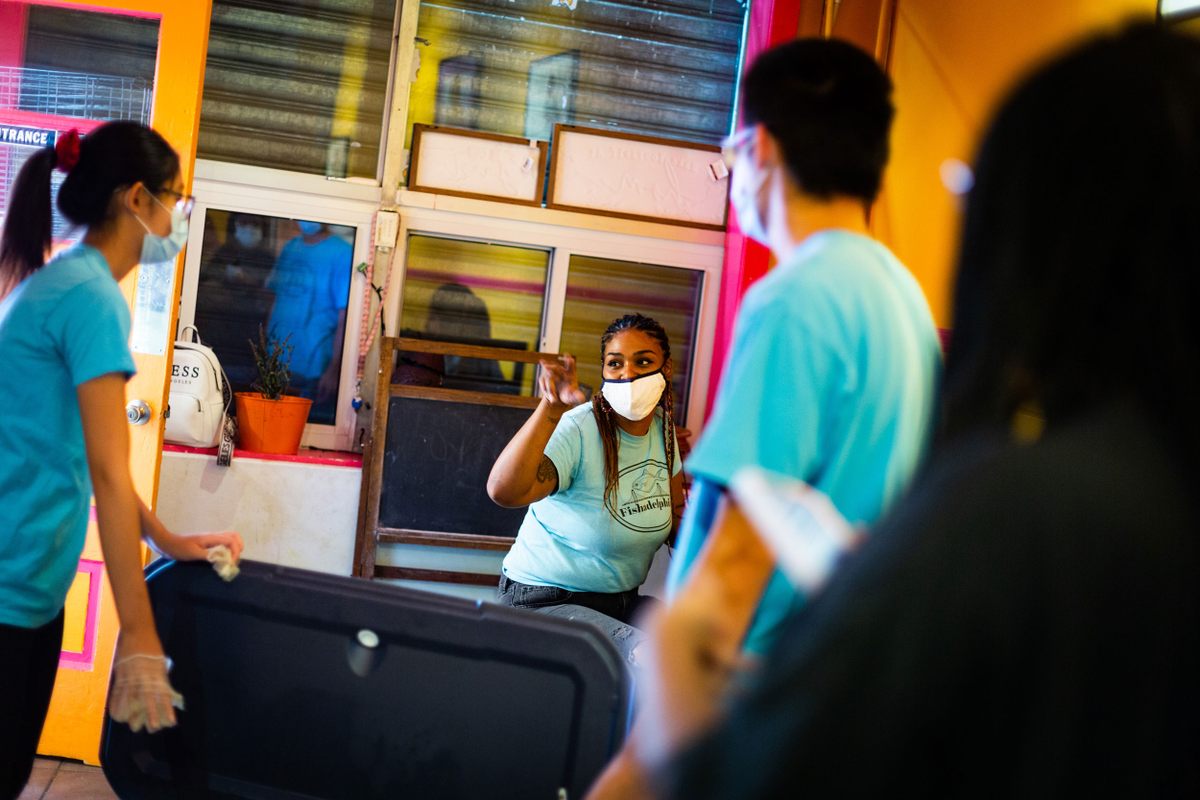
She begins a Fishadelphia week on Sundays by calling the docks to see what the fishers are catching. Then she texts the staff to decide what and how much to buy. On Mondays, she texts Mathis to pick up the order. (January 31, 2022: Mathis woke up to 40 centimeters of snow and a bad knee, so his family shoveled the driveway and he made the pickup.) He drives from the Atlantic docks, two hours across central New Jersey into Philadelphia, to the People’s Kitchen, a collaborative project supporting food security where professional cutters take two days to fillet the fish and pack it on ice in coolers. (February 1, 2022: after filleting, they found they had enough for four coolers, not three as agreed.)
Then on Wednesdays, Palacio and her various relatives pick up the coolers. (February 2, 2022: texting each other, “Does anyone have a car that can handle four coolers?” “Yes, if I get the furniture out of it.”) They drive them to Simon Gratz Mastery Charter high school. (February 2, 2022: school was closed for weather, texted maintenance staff to get in, the elevator wasn’t working so three students carried the four coolers upstairs.) Gratz high school has a culinary suite with commercial sinks and tables where students open the coolers, bag up the individual orders, and put the bags in more coolers. (Palacio: “Ripping open that scallop bag, it’s a sexy moment, that sweet smell.”) The 10 cooler hosts pick up their assigned coolers from the school and fan out across the city to their own porches where between 10 and 45 neighbors pick up their orders. (Staff member: “One customer didn’t pick up, I called her, she ignored me, but I know her mother so I’ll sort it out.”)
Also on Wednesdays, students in the Fishadelphia after-school programs at Gratz high school in North Philadelphia and at Thomas high school in South Philadelphia set up fish stands for the public, first come, first served. (At Gratz, mostly Black students tend to be interested in food sovereignty and food justice; at Thomas, mostly Asian, the students tend toward business practice and getting fish for their families; both schools share all these tendencies.) The following Monday, the Fishadelphia staff debriefs the previous week, what went well, what to fix, what’s to be done next, how much was spent (salaries, supplies, delivery, People’s Kitchen) and how much was brought in, and the expenses are usually larger than the income.
Notice that things routinely go wrong and everything that goes wrong gets fixed. But the whole enterprise is perched on the edge: Young says they’re going to run out of money, “and I’m trying dramatically to get us not to do that.” Also notice that every possible failure is followed by a plan.
The plan to make the business self-sustaining is to recruit customers who can pay market price to subsidize the customers who cannot. They have 265 customers, she says, “and that needs to be at 600,” so they’re creating “a more coherent brand” and have set up a marketing department. They operate on the short term: “We’re in the high weeds,” Young says. “We’re putting out fires.” So they’re creating departments—member experience, member management—and they’re documenting what everyone does so everything can be done by anyone. “Structure is in process,” Young says. “We used to drop all the things, now we drop only a few.” Kristin Hunter-Thomson, director of Dataspire, an education consulting company and on Fishadelphia’s original board of advisers, thinks Fishadelphia will stay in business: “I do think it will. If I’ve learned anything it’s that Talia is phenomenally good at making things happen.”
Fishadelphia moves thousands and thousands of fish to hundreds of people, but otherwise its impact on students, communities, and fishers—the point of its being— is hard to measure. No one has yet traced the social networks of customers and family members and their connections to ask about Fishadelphia’s effect on its communities. The only quantifiable effects so far come from surveys and interviews and are unsurprising: customers like knowing how the fish get to them; students mostly want to learn how to run a business; suppliers mostly want to sell fish.
The nonquantifiable effects are more interesting: Whether or not the networks are being studied, they’re growing in real time. Fishadelphia runs field-trip buses to the docks: “People on [the] docks were like ‘who are these people?’” Young says, “and people on [the] bus were ‘what is this ocean?’ I don’t need Chinese grandmothers and fishers to talk to each other, but they do. They talk about fish; they actually care about fish.” Customers tend to come back every season, and in fact, during the pandemic, the number of customers rose, partly because pickup could be done at a distance.
The most noticeable effect is on the students. They sign up for Fishadelphia year after year. They see Fishadelphia as safe and comfortable, says Palacio, they offer each other support, “and I think, Oh, y’all are trying to make sure each other are healthy. They’re like good family.” One of the several students who came back as staff is just old enough to remember the fish truck: “The fish truck, it’s ironic that being that young and having that impact on me. And it’s also the same impact that Fishadelphia has on me now altogether. And it’s like I was meant to be here, you know what I mean?” What Young wants most for the students, she says, is “for them to have had a community.”
“That’s what I do,” she says, “I create community.” She thinks communities are created less by programs than by the individual relationships that she sees unfolding. “That’s where change mostly happens,” she says. “It happens in relationships.”

It’s an old idea, still revolutionary, that relationships are the breeding grounds for communities and communities breed change. And big changes, like economic, gender, and racial equity, start small: on field trips to the docks, at the fish stands, during porch pickups; two people, a few people talking; fishers, grandmothers, students, customers, Fishadelphia’s staff, Black and Asian and queer and straight people, people with money and people who are low income, and people who like fish. “They’re connected,” Young says, “the world works in a way that they’re all connected. We don’t live in a world in which we can just sell fish.”
And meanwhile, she adds, even before sweeping social change, “we’re all bound up together and there’s something glorious about it, we all get to be in it together.”
Also meanwhile, Fishadelphia may have a future or it may not. Tasha Palacio, now Fishadelphia’s assistant director of seafood management and youth programming, met Young when she was 15, one of Young’s first hires. “I like to imagine people going home after work and saying, Tonight is fish Wednesday.” Palacio says. “I like Fishadelphia being in people’s homes, being part of their conversations. I feel like we’re creating a little safe haven of fish Wednesdays.”
And if, like the fish truck, Fishadelphia goes away? Even then, people still remember the fish truck, Palacio says, they still talk about it, and she would like Fishadelphia to be the same; she would want people sitting on their stoops saying, Remember Fishadelphia where you could get fresh fish? She would want Fishadelphia to still be a little safe haven, to still be giving people a reason to talk to each other, still spreading a net invisibly over the community it helped set up.
Acknowledgments
The podcast from which the opening conversation was transcribed was done by students at Haverford and Bryn Mawr Colleges outside Philadelphia: Mimi Tran, Rachel Gass, Julie Rebh, Avery Matteo, and luigie alequín.
The people interviewed about the fish truck were Zakheem Lindsay-Moore, Mary Yee, Paul Uyehara, Rennie Murray, and Khalil Steward.
This article first appeared in Hakai Magazine and is republished here with permission.
Gastro Obscura covers the world’s most wondrous food and drink.
Sign up for our regular newsletter.


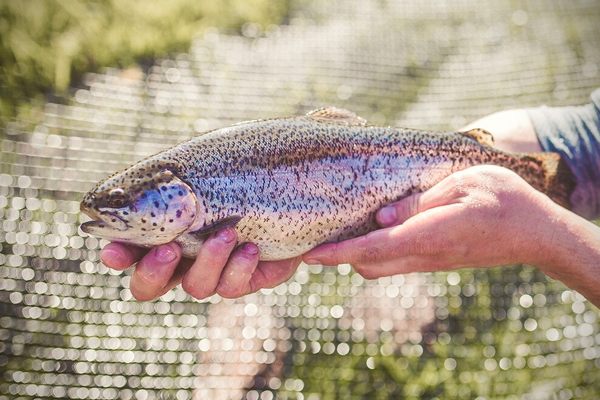
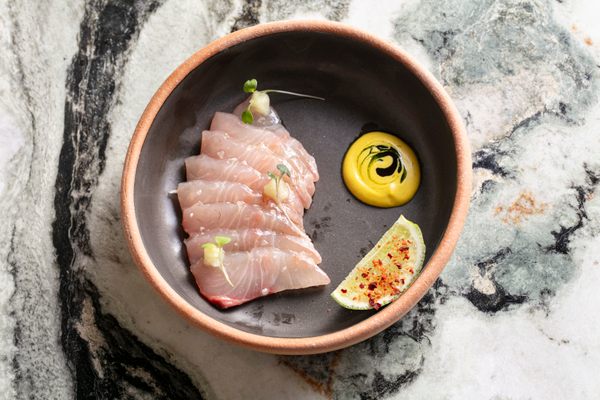





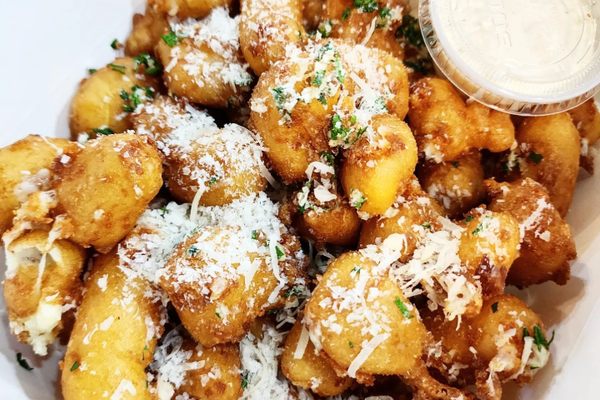


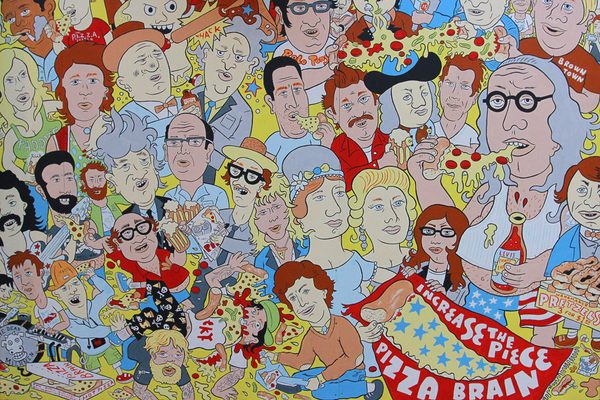
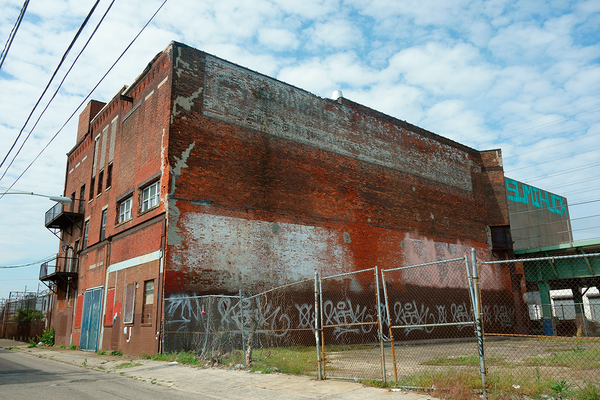


Follow us on Twitter to get the latest on the world's hidden wonders.
Like us on Facebook to get the latest on the world's hidden wonders.
Follow us on Twitter Like us on Facebook